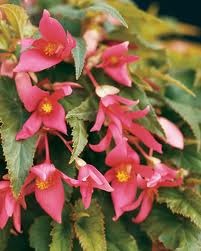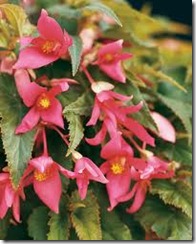There are more than 1,000 species of begonia worldwide. Most begonias aren’t hardy in cold temperatures, making them a garden annual. If grown indoors under the right conditions, begonias can also live as perennials. Some begonias can grow up to 12 feet tall and feature small flowers in a wide variety of colors, including pink, white, red, orange, yellow, peach and bi-colors.
Site Selection
-
Most begonias thrive in part shade and well-draining soil. If planted in containers, they tend to grow well on porches and in other sheltered areas. If grown indoors, choose a location with indirect sunlight.
Planting
-
When planting begonias in the garden, first till the soil. Dig a shallow hole and place the begonia tuber inside it. The tuber should sit just slightly below the soil line. If planted deeper, the tuber is more apt to rot. Water well. When shoots begin popping up, place a layer of peat moss over the tubers.
Watering
-
Water begonias only when the soil begins to dry. Keeping the soil too moist will rot the plant. Because begonia leaves are prone to diseases caused by moisture, water in the morning so leaves have plenty of time to dry off. It also helps to water at the base of the plant so the leaves do not get wet.
Other Care
-
Do not cultivate around begonias, as this can destroy their root system. To fertilize, use a balanced liquid fertilizer, such as 10-10-10.
Autumn and Winter Care
-
Immediately after the first frost in the autumn, dig up begonia tubers. Cut off all foliage with a pair of hand pruners. Allow the tubers to dry for several days on a layer of newspapers in a dry, dark location. Place the dry tubers in a paper bag and cover them with dry peat moss or sawdust. Store the bag at about 50 degrees Fahrenheit. After the last threat of frost in the spring, replant the tubers.
Special Types
-
Evergreen flowering begonias can stay in a pot year round. However, they must come indoors if they normally live outside. Bushy types of begonias, such as wax begonias, are also suitable for growing indoors during cool weather.
Pests and Diseases
-
Begonias are prone to diseases such as powdery mildew, Botrytis blight and stem rot. Pests such as spider mites, mealy bugs, scales, slugs and snails are common pests to begonia plants.


Deprecated: strpos(): Passing null to parameter #1 ($haystack) of type string is deprecated in /home/agriviek8Qv/agriviet.net/public_html/wp-includes/comment-template.php on line 2522